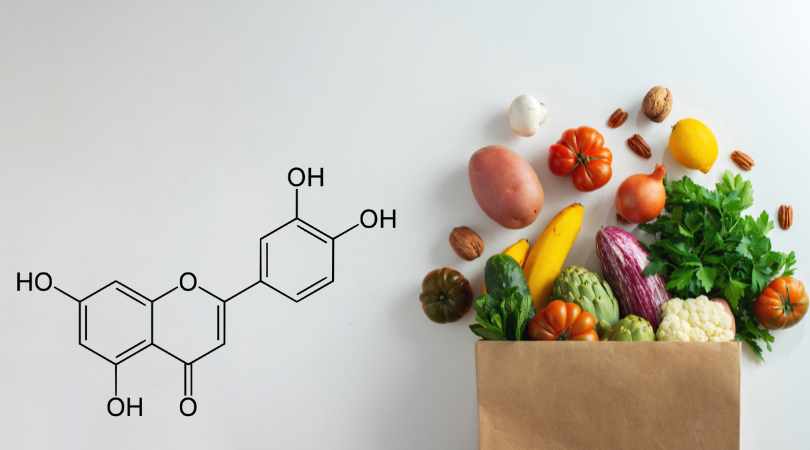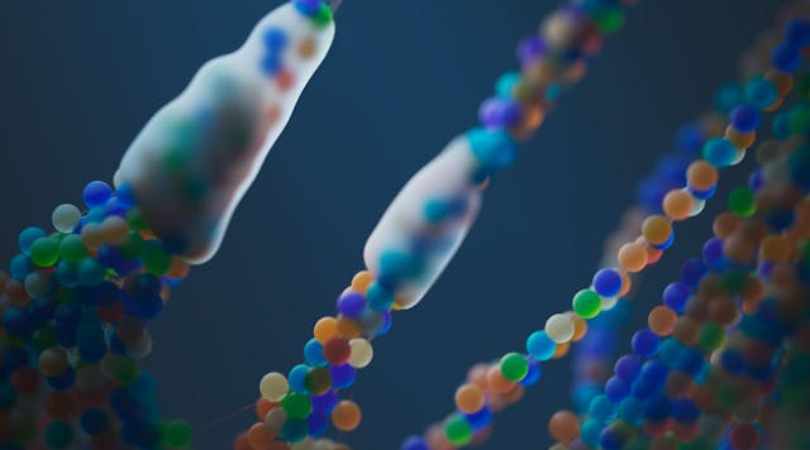Scientists have successfully restored the lost uricase enzyme, a key breakthrough in combating fructose-induced fat formation. This discovery offers new hope for preventing obesity and metabolic disorders by targeting how the body processes sugar and stores fat.
Limited Quantities Available! Order Today and Enjoy Free Shipping on Orders Over $100!
Luteolin: The Anti-Sugar Nutrient You’ve Never Heard Of (But Need to Know About)

We all know sugar is a problem. What’s less understood is why it creates such wide-ranging damage. New research points to a single metabolic switch—fructokinase (KHK)—that decides whether sugar becomes energy or fat. And nature may have given us a way to quiet that switch: a flavonoid called luteolin.
In this article, we’ll explore luteolin benefits, explain how a luteolin supplement can help restore metabolic balance, and examine its safety and side effects through the lens of modern metabolic science.
What is Luteolin?
Luteolin is a naturally occurring flavonoid found in herbs and vegetables like celery, parsley, chamomile, thyme, and green peppers. It belongs to a class of plant compounds that once featured heavily in ancestral diets, supporting oxidative balance and cellular resilience.
Today, these protective nutrients have almost vanished from the modern food supply. Agricultural sweetness, refinement, and reduced plant diversity have left the average person consuming less than two milligrams of luteolin per day—far below the levels used in research. Restoring luteolin through a supplement reintroduces a missing piece of the metabolic puzzle: a natural compound that helps the body manage energy efficiently and counter the effects of excess sugar.
How Luteolin Works: Turning Down the Fructose Switch
Fructose metabolism begins with one decisive step. Once inside the cell, fructose is rapidly phosphorylated by fructokinase (KHK) into fructose-1-phosphate—a reaction so fast it burns through cellular ATP in seconds.
That burst of ATP loss sets off a chain reaction:
- AMP deaminase activation, generating uric acid
- Oxidative stress via NADPH oxidase
- Inflammation through NF-κB activation and cytokine release
- Suppression of nitric oxide, tightening blood vessels and lowering oxygen delivery
- Mitochondrial slowdown, mimicking famine even when calories are abundant
The result is the metabolic fingerprint of modern disease: low energy, cravings, fat storage, and chronic inflammation. When this pathway runs continuously, it drives insulin resistance, fatty liver, and systemic fatigue.
Luteolin helps modulate this pathway. Preclinical studies show that it can slow fructokinase activity, protecting cellular energy and reducing uric acid generation. Human research, including the Altilix trial, echoes these effects—showing improved liver fat, insulin sensitivity, cholesterol, and blood pressure. While the exact molecular mechanism in humans remains under study, the consistency across models is striking.
Proof from Nature and Medicine
Essential fructosuria: nature’s proof
A rare genetic condition called essential fructosuria provides powerful evidence of what happens when fructokinase is silent. People born without this enzyme excrete fructose harmlessly in urine and never develop metabolic disease despite normal sugar intake.
This natural experiment demonstrates three things:
- Fructokinase is the gateway enzyme that initiates sugar’s damaging effects.
- Without it, the cascade never begins.
- Blocking it preserves metabolic health even in the presence of dietary sugar.
Essential fructosuria is living proof that inhibiting fructokinase can protect the body from sugar’s metabolic consequences.
Pharmaceutical confirmation
Pharmaceutical research later confirmed this principle. In clinical trials, PF-06835919—a selective fructokinase inhibitor—significantly reduced liver fat, lowered uric acid, and improved insulin sensitivity in patients with fatty liver disease. When fructokinase was blocked, energy metabolism normalized and inflammation subsided.
The nutritional parallel
Preclinical studies show that luteolin interacts with the same pathway naturally, moderating KHK activity and protecting against ATP loss. In liver and kidney models, it reduces uric acid production, preserves mitochondrial function, and limits lipid accumulation.
Human data mirror these findings. The Altilix clinical trial, which used a luteolin-based complex, demonstrated measurable improvements in liver fat, metabolic efficiency, and vascular markers. The pattern is consistent: when fructokinase quiets, the body’s energy systems recover.

Beyond Fructose: The Broader Energy Effect
Fructokinase inhibition explains part of luteolin’s impact, but its benefits extend throughout the energy network:
- Supports mitochondrial biogenesis and NAD+ regeneration
- Improves insulin sensitivity by lowering inflammatory cytokines in liver and fat tissue
- Restores nitric oxide balance for better vascular health
- Crosses the blood-brain barrier to protect neurons from endogenous fructose metabolism
- Reinforces redox balance and fat oxidation, helping cells withstand stress
Viewed through the fructose metabolism model, luteolin helps reverse the fragile energy state that underlies obesity, diabetes, cardiovascular disease, and cognitive decline.
Check Out - The Forgotten Enzyme Behind Sugar Damage: What Is Fructokinase and Why Should You Care?
Hormone Health and the Endocrine Question
Because luteolin interacts with estrogen receptors in laboratory studies, some sources have labeled it a phytoestrogen. The term is misleading.
In vitro, luteolin can both activate and block estrogen receptors depending on context—a hallmark of selective modulation. In vivo and human studies show no feminizing or androgen-suppressing effects. Instead, luteolin tends to rebalance hormonal signaling by reducing oxidative and inflammatory stress in hormone-sensitive tissues.
In PCOS models, luteolin reduces ovarian inflammation and androgen excess, improving insulin sensitivity and fertility markers. In menopausal research, it has been associated with better vascular comfort and mood stability, driven by its anti-inflammatory properties rather than hormone mimicry.
In short, luteolin is hormonally balancing, not disruptive. Its influence is metabolic—restoring the energy environment that hormone systems depend on.
Luteolin Benefits at a Glance
|
Benefit |
Mechanistic basis |
|---|---|
|
Improved insulin sensitivity |
Reduces inflammation and supports mitochondrial function |
|
Reduced liver fat (NAFLD) |
Modulates fructokinase activity and normalizes lipid metabolism |
|
Lower uric acid and oxidative stress |
Prevents ATP depletion and limits NADPH oxidase activation |
|
Improved energy and focus |
Preserves NAD+ and neuronal ATP stability |
|
Reduced cravings and appetite |
Calms fructose-driven hunger and energy deficits |
|
Cardiovascular protection |
Restores nitric oxide and vascular elasticity |
|
Neuroprotection |
Shields neurons from endogenous fructose and hypoxia |
|
Anti-tumor potential |
Normalizes metabolism in fragile, glycolytic cells |
Luteolin Supplement Safety and Side Effects
Luteolin has an excellent safety record. Across human trials and decades of dietary exposure, no serious adverse effects have been reported.
Occasional mild digestive changes—temporary bloating or altered stool—may appear during the first few days of use. This is usually a short-term microbiome adjustment to increased polyphenol intake, similar to what occurs with green tea or quercetin. These effects typically resolve quickly and indicate beneficial engagement of gut flora, not intolerance.
Also Read - Luteolin as a Fructokinase Inhibitor: A Sensible Choice for Healthy Individuals and Athletes?
Why Supplementation Matters
Even a balanced modern diet provides only trace luteolin. Supplementation restores a physiologic range of this missing nutrient, helping close the gap between modern intake and the levels once achieved through diverse plant consumption.
By modulating fructokinase, reducing uric acid, and supporting mitochondrial efficiency, luteolin helps patch the metabolic leak that sugar creates. It doesn’t replace healthy habits—it amplifies them by addressing the upstream switch that makes metabolic balance difficult to maintain.
The Bigger Picture
Modern life keeps the fructose switch permanently engaged through sugar, refined carbohydrates, salt, alcohol, dehydration, and stress. Luteolin helps turn that switch down, restoring access to stored energy and reducing the constant signal of scarcity.
When ATP levels recover, cravings fade.
When nitric oxide returns, circulation and cognition improve.
When mitochondria reactivate, energy and clarity follow.
Luteolin isn’t a stimulant or a detox—it’s a metabolic modulator for the modern world.
References
- Le MT et al. (2016). Bioactivity-guided identification of botanical inhibitors of ketohexokinase. PLoS One 11(6):e0157458. doi:10.1371/journal.pone.0157458.
- (Natural discovery of luteolin as a KHK inhibitor.)
- Kazierad DJ et al. (2021). Inhibition of ketohexokinase in adults with NAFLD reduces liver fat and inflammatory markers. Med 2(7):800–813.e3. doi:10.1016/j.medj.2021.04.007.
- Johnson RJ et al. (2023). The fructose survival hypothesis for obesity. Philos Trans R Soc B 378(1885):20220230. doi:10.1098/rstb.2022.0230.
- Nutrients (2019). Altilix RCT (artichoke + luteolin) improved hepatic fat and insulin sensitivity. Nutrients 11:2580. doi:10.3390/nu11112580.
- Saxena AR et al. (2023). A phase 2a randomized trial of PF-06835919 in NAFLD + T2D. Diabetes Obes Metab 25(4):992–1001. doi:10.1111/dom.14946.
- Lanaspa MA et al. (2013). Endogenous fructose production and metabolism in the liver contributes to the development of metabolic syndrome. Nat Commun 4:2434. doi:10.1038/ncomms3434.
Disclaimer: The information in this blog reflects personal opinions, experiences, and emerging research. It is not intended as medical or professional advice and should not replace consultation with qualified professionals. The accuracy of this content is not guaranteed. Always seek guidance from a licensed expert before making any health-related decisions.


Chris | 🔬 Founder of LIV3 Health
⚡ A keen researcher dedicated to uncovering the root causes of metabolic dysfunction, the key driver of chronic conditions behind 70% of global deaths. His findings led to science-backed, natural solutions designed to inhibit fructose metabolism.
📢 Follow me on Reddit for insights on metabolic health and the future of wellness! -





